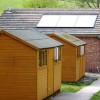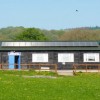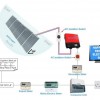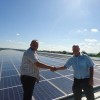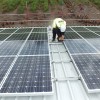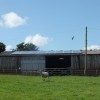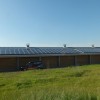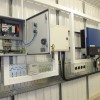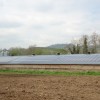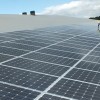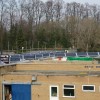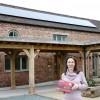Introducing Solar Thermal & PV
The Earth receives enough energy from the Sun in a single minute to meet all our global energy needs for one whole year!
Quite simply, we are at the very early stages of capturing some of the Sun’s energy microgeneration Solar technologies.
Currently there are two main types of Solar Micro Energy Technology
- Solar Thermal – to heat water using warmth from SUNLIGHT
- Solar Photo Voltaic – to generate electricity using DAYLIGHT
Solar Thermal
Nearly half of the energy consumed in the UK is for heating.
Solar Thermal systems provide a clean way of heating water for washing and bathing – from hot water for the humble kitchen sink to even heating a swimming pool.
The solar panels, called Collectors, absorb heat from the Sun either as Direct Radiation on a sunny day or Diffused Radiation when the Sun is obscured by cloud
There are two types of Solar Thermal Collectors (panels):
Vacuum Tube Collectors and Flat Plate Collectors
Vacuum Tube Collectors are believed by many to be the more efficient of the two options, but there have been some concerns that they may not be as robust as the Flat Plate Collector alternatives. Consideration ought to be given to the nature of the intended installation site, for example a Cricket Pavilion might give cause for careful ‘big hitter’ consideration.
Collectors (panels) are typically roof mounted – they can be integrated into the fabric of the roof or mounted on special rails.
The basic principle is that heat energy is absorbed by the Collectors from the sun and a heat transfer fluid (glycol) is circulated through a heat exchanger in the hot water tank.
Thermal Solar systems produce no pollutants and are noiseless in operation. Savings on energy bills vary according to hot water demand, but a typical family of four could save over half their water heating costs.
The resultant carbon reduction approximates to taking a small family car off the road.
Solar Photovoltaic (PV)
The word Photovoltaic comes from ‘Photo’ which is Greek for ‘Light’ and ‘Volta’ the Italian Physicist Alessandro Volta, who invented the chemical battery.
Voltage is created when certain materials, such as Silicon, are exposed to light; a phenomenon known as the ‘Photovoltaic Effect’. However, an electrical current cannot flow because the electrons that form the electricity are not free to move. Solar PV Cells overcome this problem because they have been chemically altered. They effectively work along exactly the same principles as Volta’s chemical battery, but only produce energy when daylight is available.
The resultant Direct Current electricity is converted to usable Alternating Current by a box shaped device called an Inverter - the energy produced is then recorded in kilowatt hours (kWh) by a Generation Meter. Some of the energy produced can be consumed within the generating premises with the balance being exported back into the Grid for someone else to consume. In a commercial setting the energy can alternatively be fed into a battery store for future use.
As Solar PV Systems only generate electricity in daylight conditions, more electricity is generated during the long days of summer days than in winter. Even so, energy will be generated whenever daylight, direct or diffused, is available.
There’s a considerable amount of research going into developing Solar Technologies – in a future world buildings, cars, street furniture etc. may be dressed in a printed solar PV skin.
Mechanics of a Solar PV System
As we’ve already seen, PV Solar Systems convert daylight (not sunlight) into electricity. PV Modules (PV Solar Panels) are made up of many cells each containing one or two layers of a semi conducting material. An electric field is created when daylight reaches these cells making electricity flow between the semi-conducting layers.
To be effective the PV Modules need to face within 90º of South – optimum performance is obtained when facing directly south. The Modules need to be pitched at an angle between 20º - 50º - the majority of residential roofs fall within this range. A pitch range of 30º to 45º is ideal. Output performance is also affected if the Modules are partially shaded by trees or adjacent buildings.
PV Modules can be integrated into a roof, or mounted just above the tiles on a rail system. For flat roofs and suitable land sites Modules can be mounted on a ‘pitched’ racking system. Given the overall weight of the Modules, including any mounting infrastructure, it is important to ensure that the roof can bear the load. A professional site survey is really essential to check this out and the other suitability factors. Where there’s doubt a full structural survey should be commissioned.
Unlike Direct Current electricity, Alternating Current can be transmitted over long distances at high voltages using relatively low current. This is why AC electricity supply is used throughout the modern world.
All PV Systems therefore have an AC/DC Inverter to convert the DC electricity into usable AC power with safety measures including DC & AC Isolator Switches. Once converted to DC, the electricity flows though a Credit Meter to record and display how much power is being produced before arriving at the Consumer Unit. It is here that mains electricity enters a domestic property and is distributed through one or more ring circuits around the building. PV Solar System generated electricity is routed through the Consumer Unit where it is either used within the property (to help power TV, lighting, appliances etc.) or exported to the Grid if it’s surplus to requirement.
In this way a PV Solar System creates a tax free income through Feed-in-Tariff payments, reduces our consumption of commercially generated electricity, so lowering our bills and carbon emissions. The average household can expect to generate income/savings worth over £1,000 p.a.
PV Solar Systems require little in the way of maintenance over a 25 year lifecycle – just periodic cleaning of the Modules and wiring/system checks by a qualified technician. No greenhouse gasses or sound pollution are produced by their operation.





